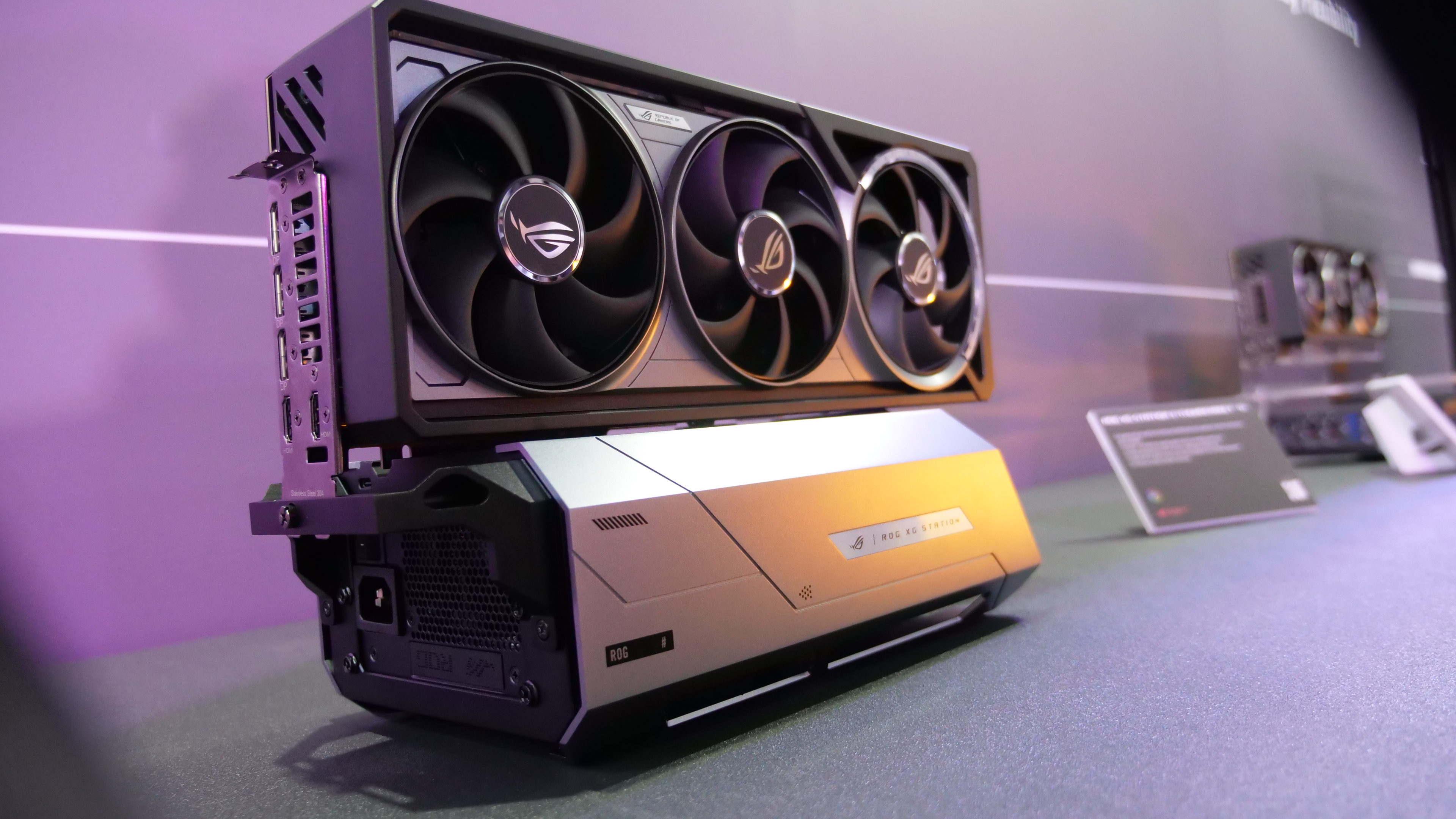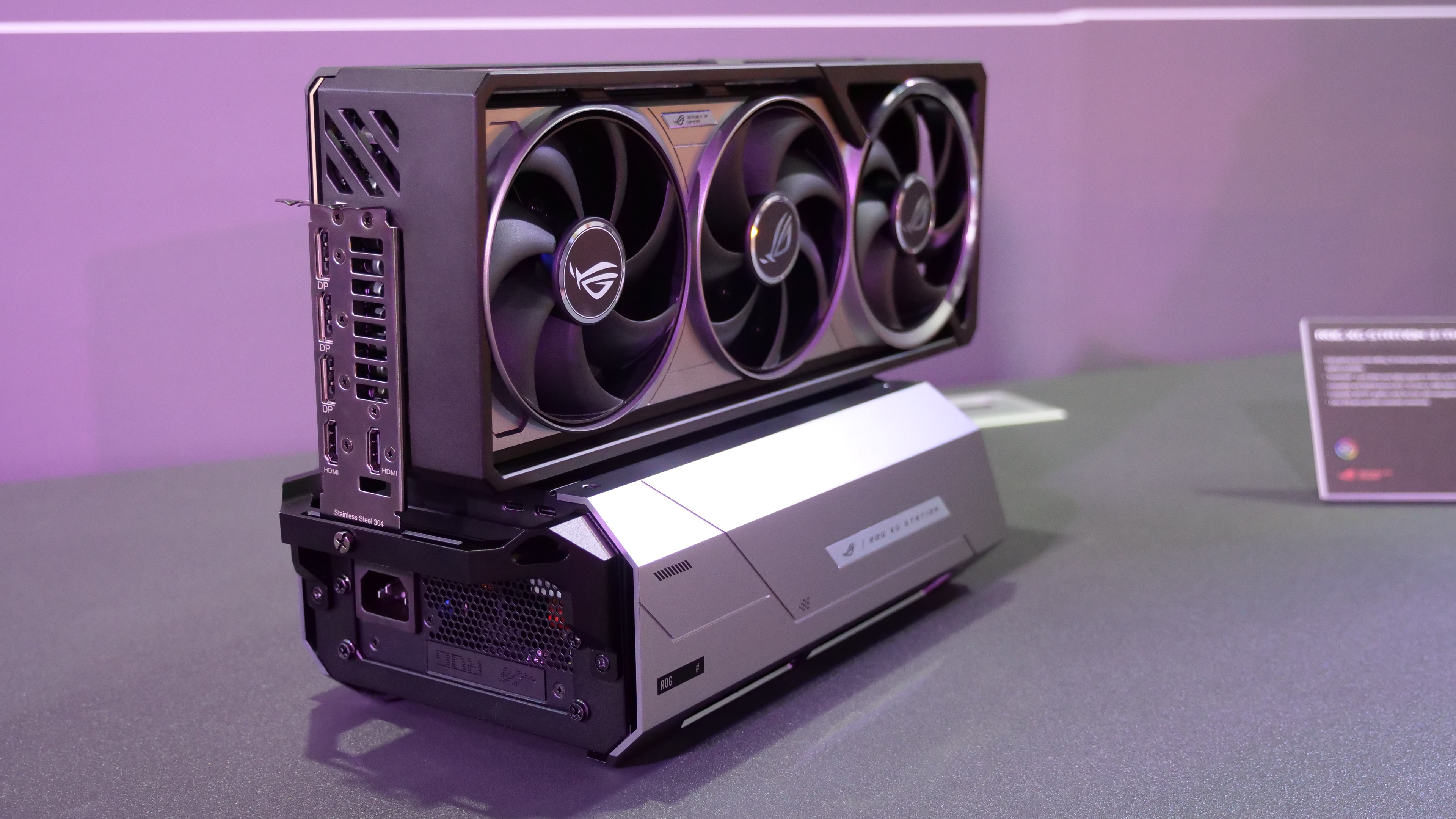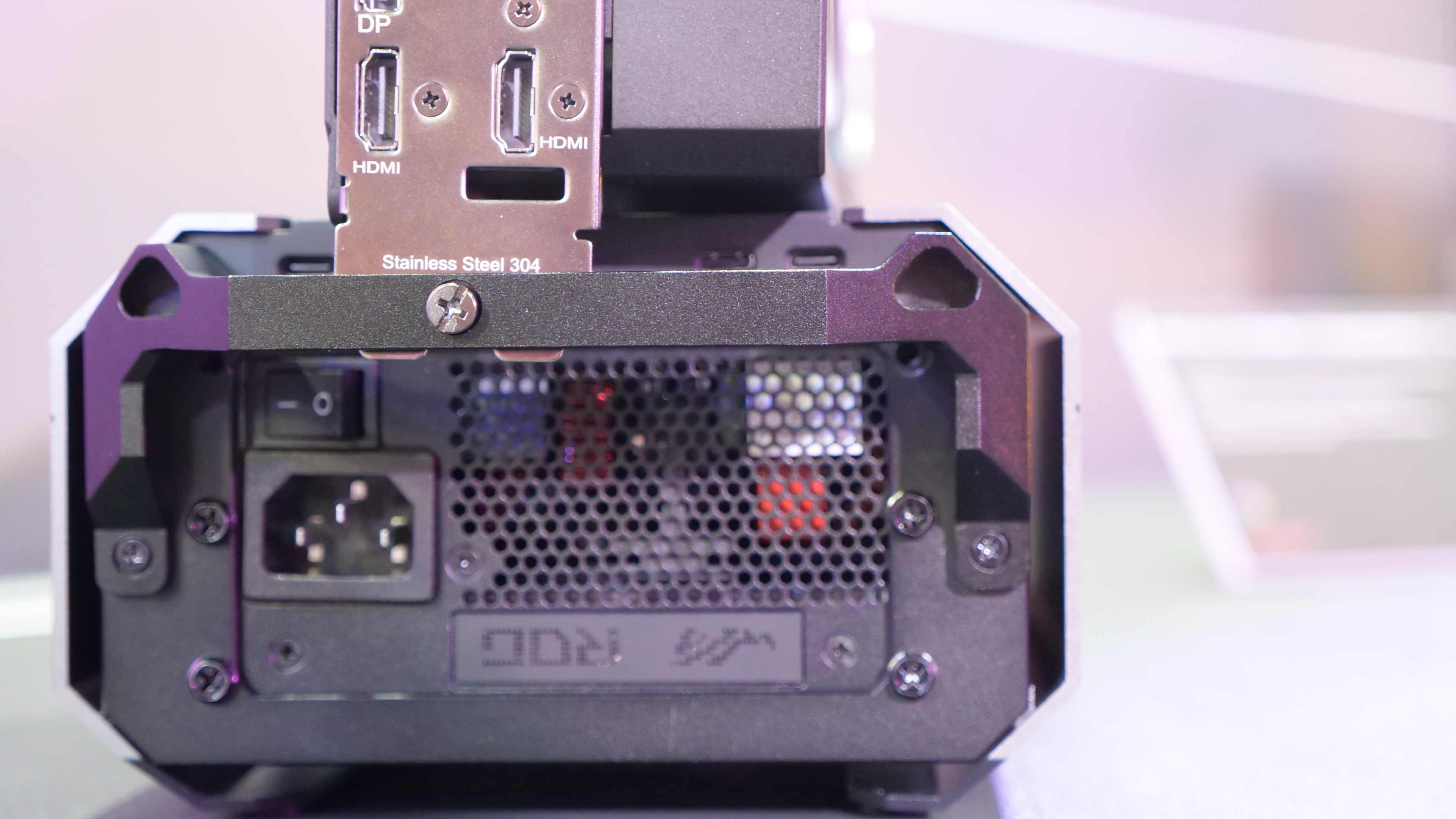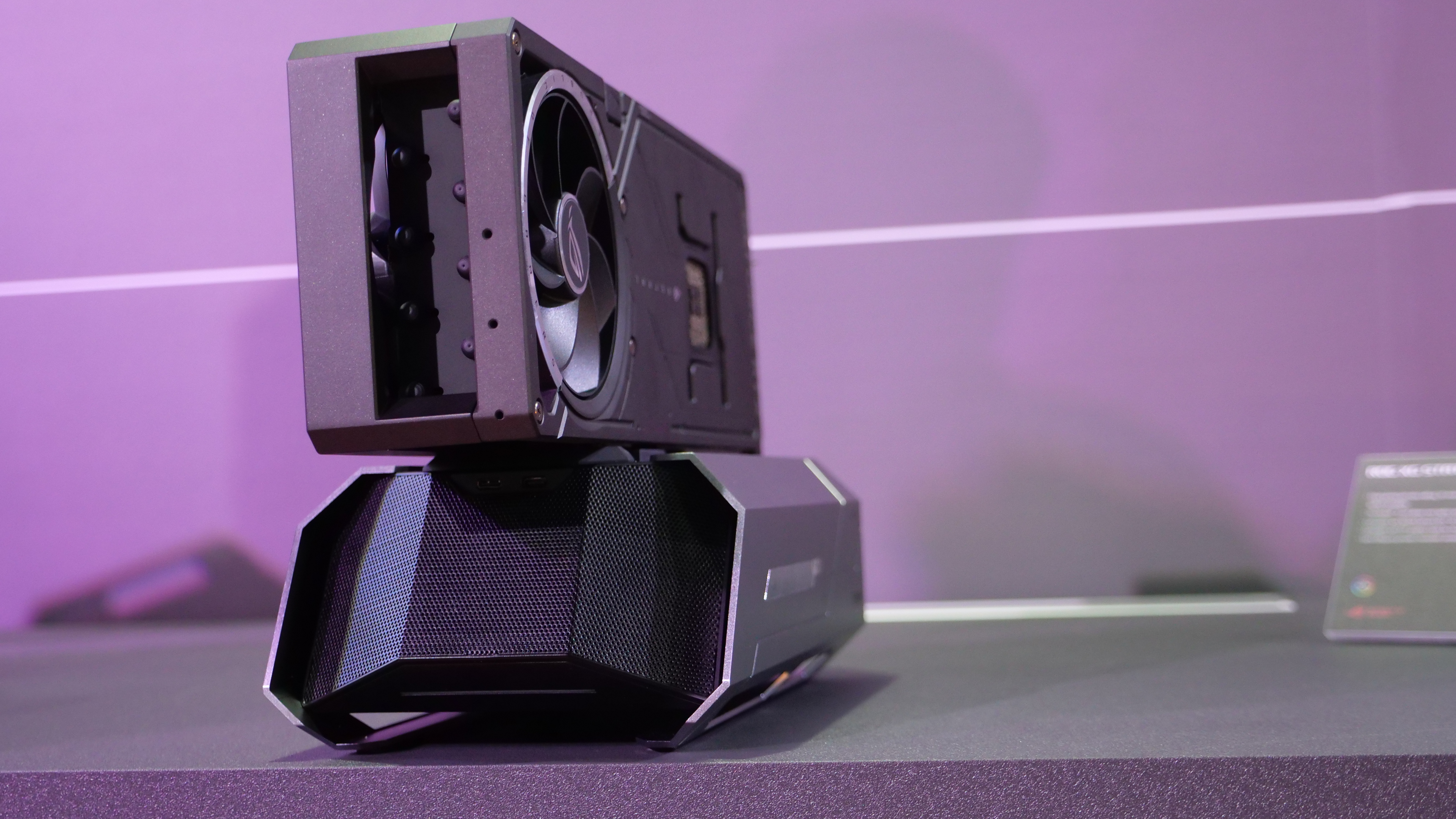
The best eGPUs (external GPUs) have always drawn considerable interest from laptop enthusiasts. The idea is brilliant: plug one into your thin-and-light laptop, and suddenly, you’re gaming at desktop-class frame rates.
The reality? Their clunky proprietary connections, limited bandwidth, and often sky-high price tags make them more of a niche solution. In 2025, though, that’s finally poised to change — thanks to Thunderbolt 5.
Thunderbolt 5 debuted on the Razer Blade 18 (2024) in April 2024, but as more laptops arrive with Thunderbolt 5 ports under the hood, we’re beginning to see a wave of new accessories built to take full advantage of that blazing-fast 80 Gbps bandwidth.
Asus’ new ROG XG Station 3 might be the best example of what Thunderbolt 5 can unlock for gamers, content creators, and remote workers who want power without giving up portability.
Asus ROG XG Station 3: True desktop power, for everyone
Let’s start with the basics. The ROG XG Station 3 is a Thunderbolt 5 eGPU, meaning you can slot in a full-size NVIDIA GeForce RTX 50 Series or AMD Radeon RX 9000 Series GPU and connect it directly to your laptop with a single Thunderbolt 5 cable.
It’s plug-and-play, yes — but this isn’t just about gaming. With that level of horsepower on tap, this dock can turn a lightweight ultrabook into a machine that can handle 3D rendering, video editing, AI workloads, or 4K gaming.
If you’ve got a laptop that’s great for on-the-go work but struggles with GPU-heavy tasks, this is your cheat code.

Thunderbolt 5’s 80 Gbps bandwidth is the secret sauce. That’s double what Thunderbolt 4 offered, and it means less compromise when routing huge volumes of data between your GPU and laptop.
For gamers, it helps minimize bottlenecks. For creatives, it means smoother timelines and faster exports.
The rise of Thunderbolt 5
The XG Station 3’s release is well-timed. Over the last few months, Thunderbolt 5-equipped laptops have started to trickle into the market from the likes of Asus, MSI, and Lenovo.
Now, there's one caveat: this is still limited to primarily high-end gaming rigs that already feature an RTX 50 series GPU — albeit the mobile variety rather than desktop. I still want to see Thunderbolt 5 come to premium ultraportables to help unlock gaming for an audience that doesn't want to commit to a dedicated gaming laptop.
It's worth noting that you can connect a Thunderbolt 4 laptop to the XG Station 3 as Thunderbolt 5 is backward compatible, but you will take a significant performance hit.

While the ROG XG Station 3 is primarily aimed at gamers, it offers a taste of what you get from the best docking stations with three USB-C ports (each with 10 Gbps speeds) for accessories, external drives, or displays.
There’s also a Thunderbolt 5 passthrough port, allowing for daisy-chaining or adding even more connectivity. And because the unit provides power delivery, it can charge your laptop at the same time — no extra power brick needed.
Clean power
Beyond raw specs, Asus didn't skimp on the design. The ROG XG Station 3 includes support for BTF (Back-To-the-Future) edition builds, which help hide cabling and keep your desktop looking clean.
It’s a thoughtful touch, as a snarl of cables can really ruin your desk aesthetic. The XG Station 3 is large enough that it will dominate most desk setups, and it leaves the GPU itself exposed. You'll want to think carefully about which GPU you buy for it.

A look at what’s next
The XG Station 3 marks our arrival at a point where the performance potential of Thunderbolt 5 is starting to align with real-world demand.
More laptops can use it. More creators and gamers want portable performance. And more manufacturers are stepping in to offer the hardware to bridge that gap.
The last piece of the puzzle is Thunderbolt 5 extending beyond gaming laptops. You could be using a lightweight Zenbook or a convertible 2-in-1 and still benefit from a high-end GPU when you're docked. That kind of flexibility just hasn’t been practical until now.
If 2024 was about getting Thunderbolt 5 in a few laptops and accessories, 2025 is when we start to see the standard going into wide release. And with devices like the XG Station 3 leading the charge, we’re looking at a future where portable PCs no longer have to compromise on power.
You don’t have to settle for mobile GPU power in your laptop; you can go desktop-class without the bulk of a desktop.







